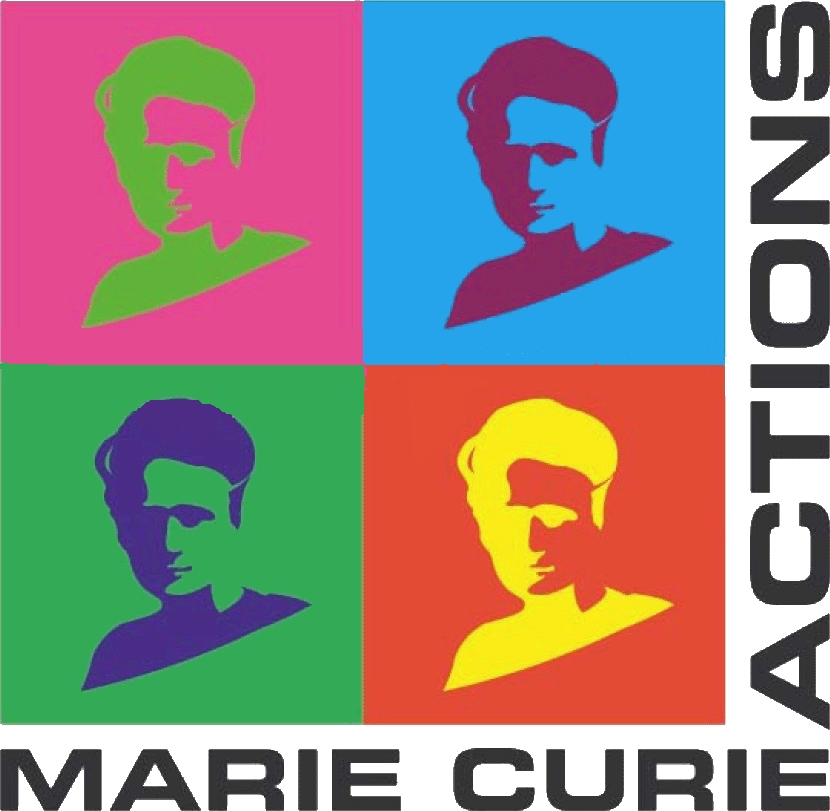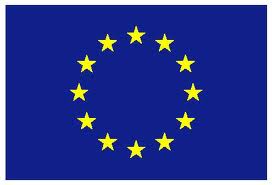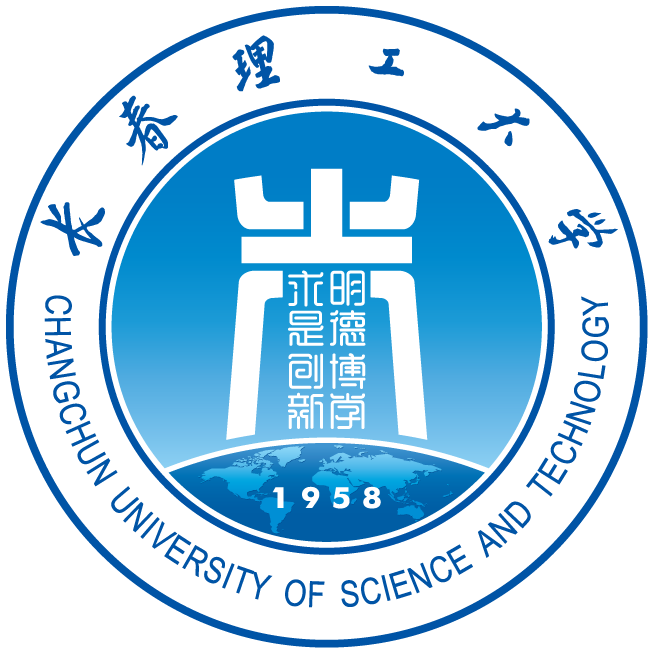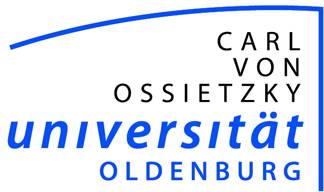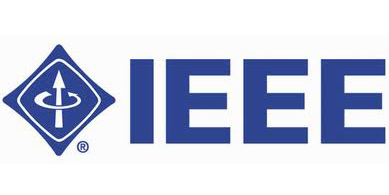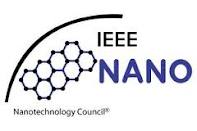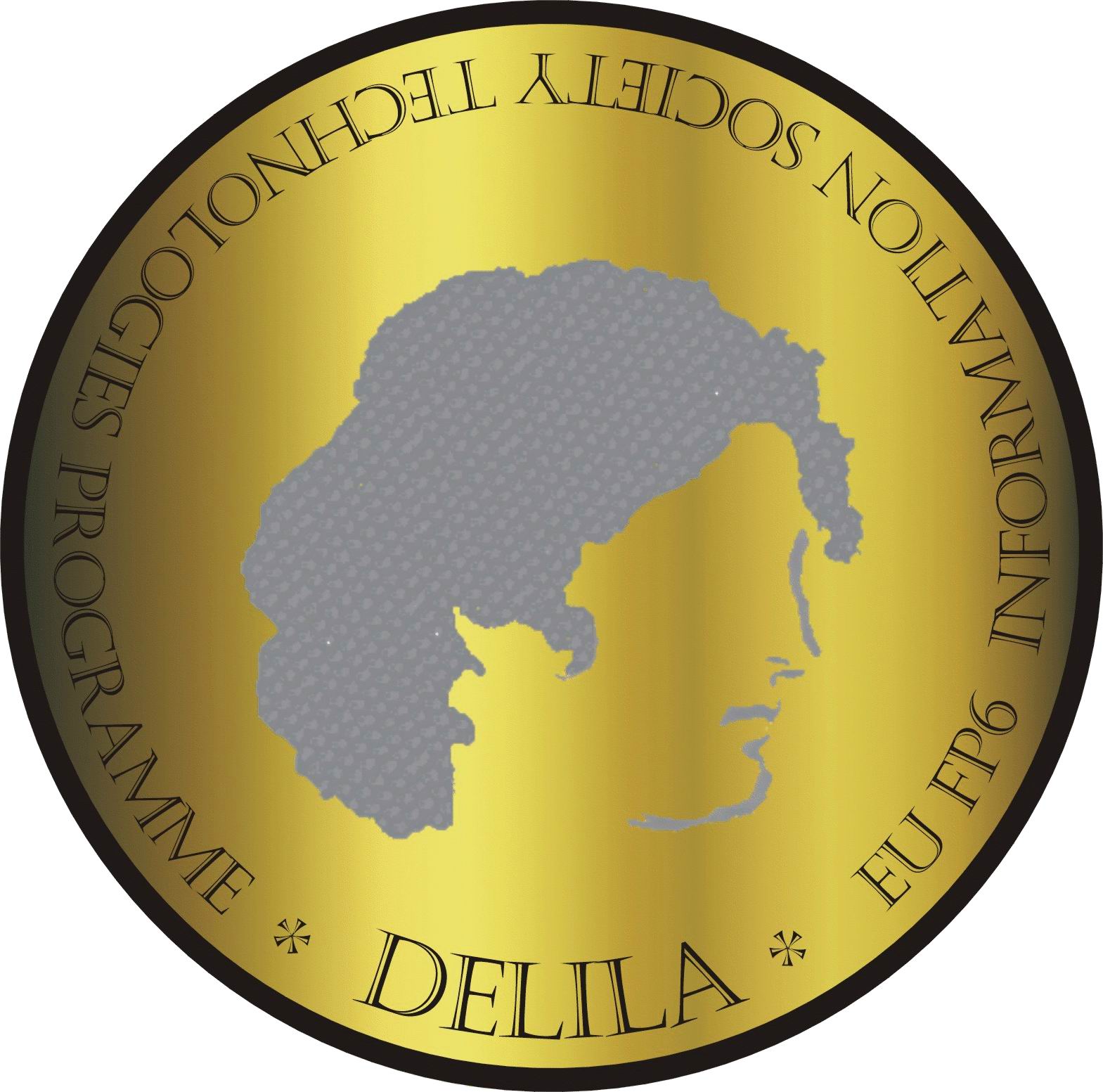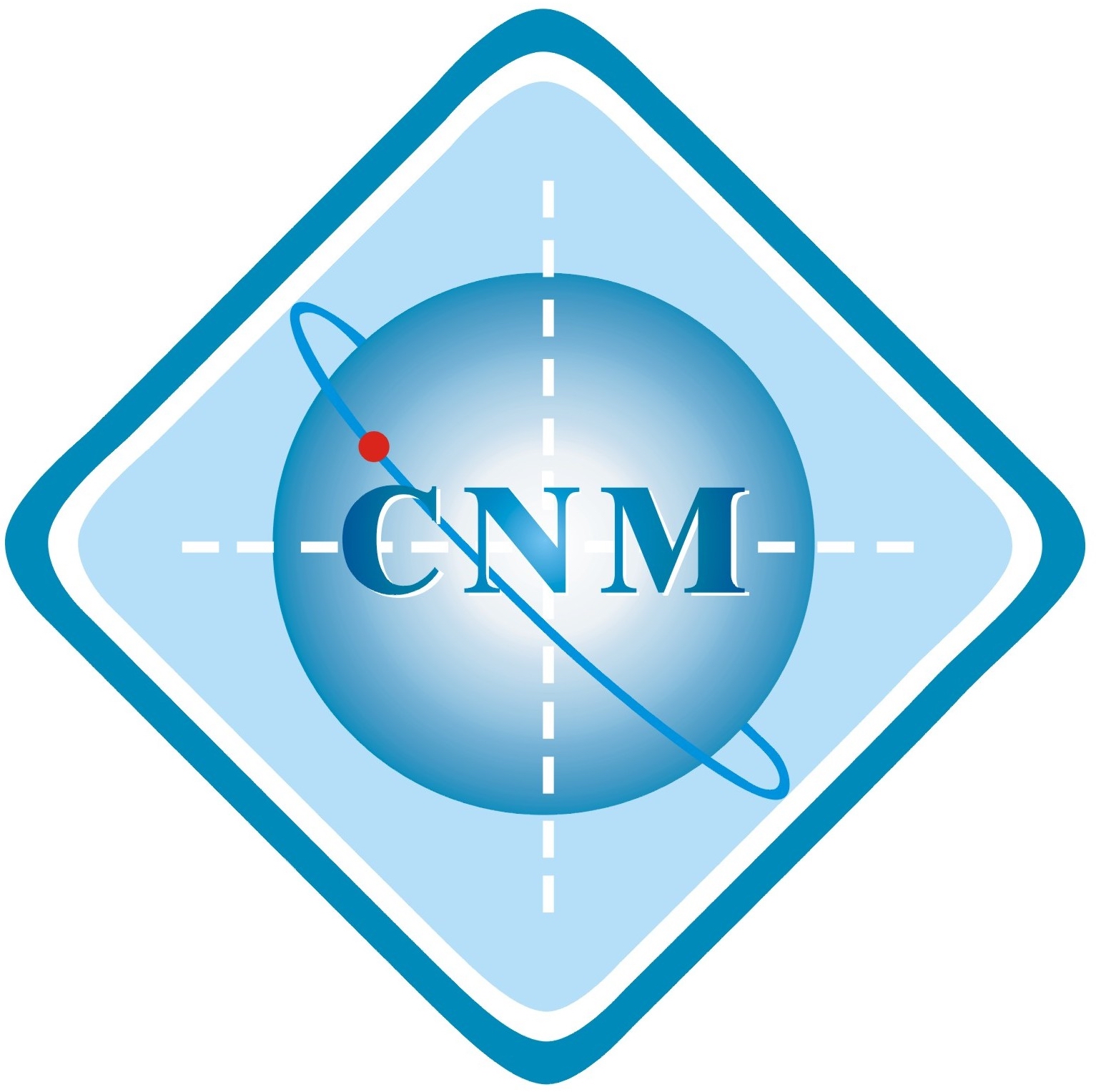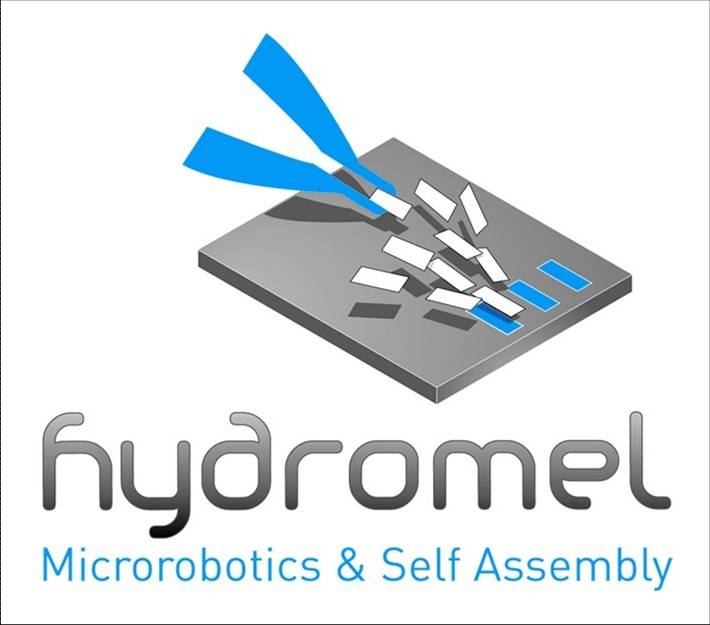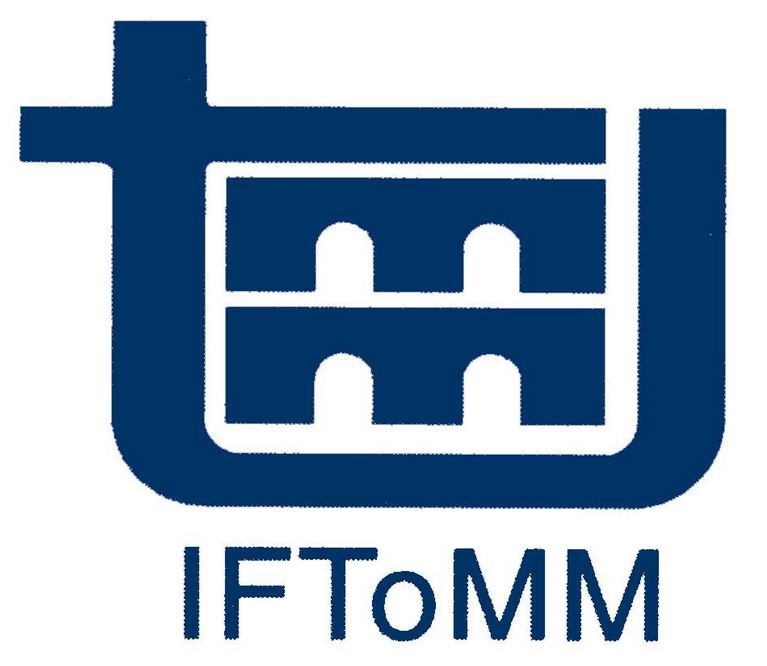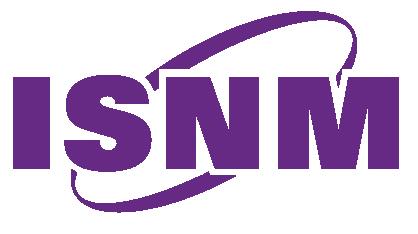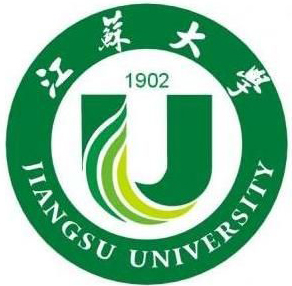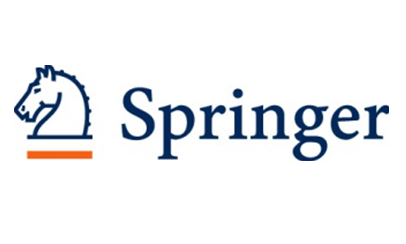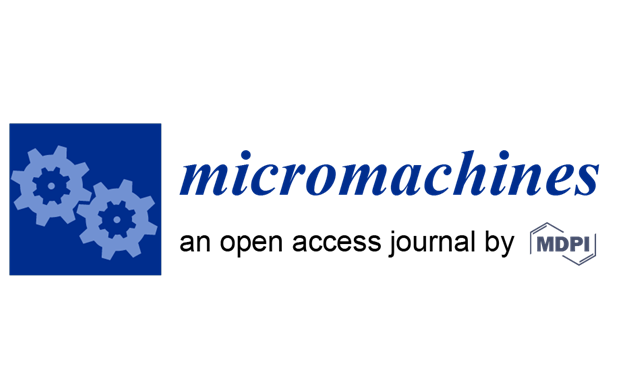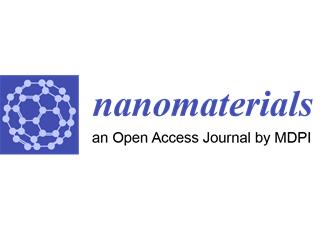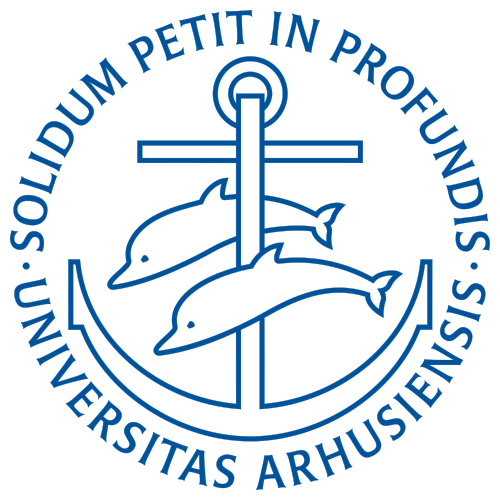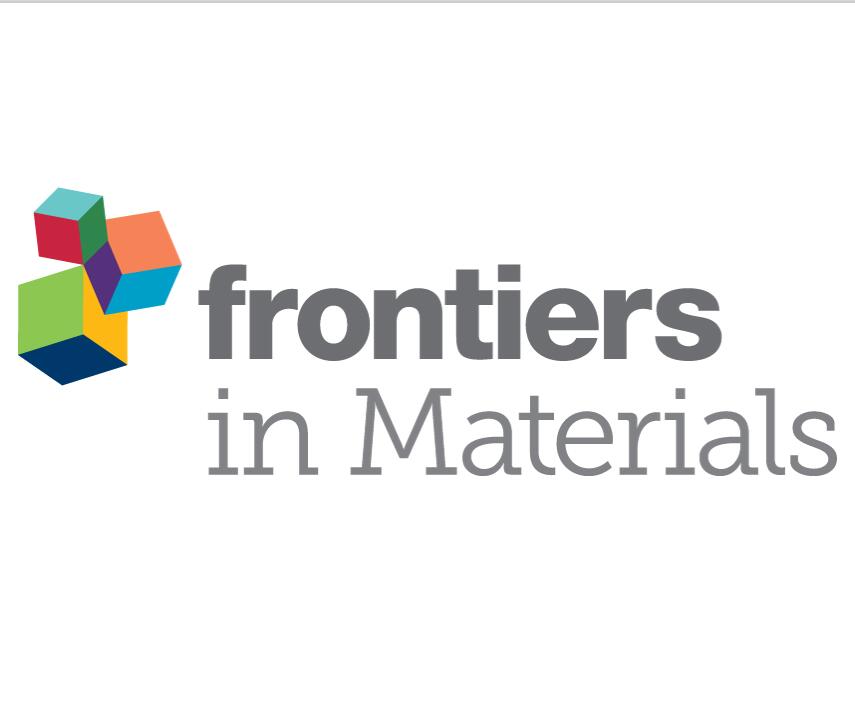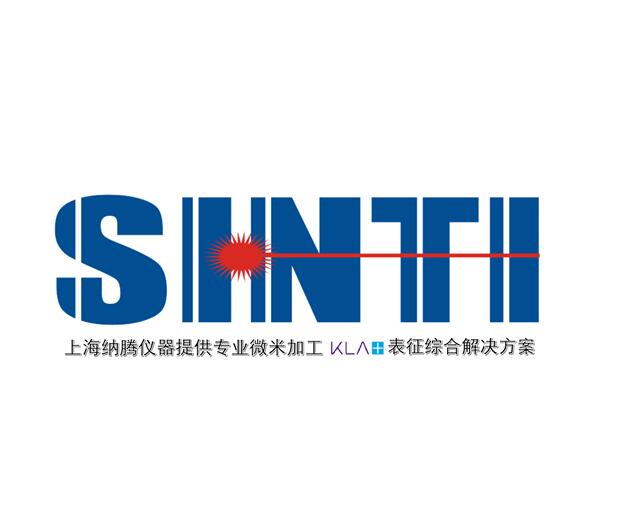|
|
| |
Keynote Speakers |
|
|
|
|
|
|
|
| |
*The list of Keynote speakers is based on the alphabetical order of family names
|
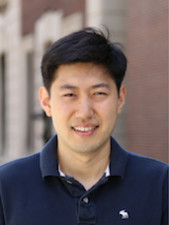
|
|
Xi Chen |
|
Assistant Professor |
|
CUNY Advanced Science Research Center |
| Department of Chemical Engineering |
| The City College of New York |
|
USA |
|
Personal homepage |
|
|
|
Title: Nanostructured Water-responsive Materials for Evaporation Energy Harvesting |
|
Abstract: Natural evaporation involves water absorbing heat and vaporizing from higher chemical potential to lower chemical potential. While this process could involve a significant amount of energy transfer due to water’s large latent heat of vaporization, the energy of natural evaporation remains untapped. Our recent progress in nanostructured water-responsive materials, which swell and shrink in response to changes in relative humidity, has enabled the development of evaporation energy harvesting devices that can directly convert evaporation energy into mechanical energy as well as to electricity. While such energy harvesting technique is still in its early stage, theoretical studies have predicted a great potential of this energy source. Here, motivated by these recent developments, we discuss our current development of water-responsive materials and evaporation harvesting devices, as well as the scientific and technical challenges of improving their overall energy conversion efficiency for practical applications. |
|
|
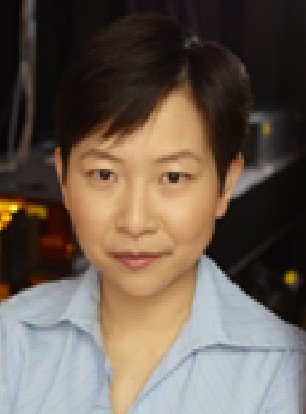
|
|
Baohua Jia |
|
Professor |
|
Centre for Micro-Photonics, Faculty of Science, Engineering and Technology |
|
Swinburne University of Technology |
|
Melbourne, Australia |
|
Personal homepage |
|
|
|
Title: Graphene oxide optoelectronics |
|
Abstract: Recently, inspired by the extraordinary physical and chemical properties of graphene, great research effort has been devoted to develop functional graphene-enabled devices. However, challenges still exist in developing scalable and low-cost fabrication method. Solution processible graphene oxide provides a viable approach for achieving reasonable quality and large-scale graphene films with minimum fabrication effort through removing the oxygen containing groups in graphene oxide. In this talk I will introduce our recent progress on laser patterned graphene oxide film for highly-integrated optoelectronics devices towards energy, integrated photonic devices, information technology and water desalination applications. |
|
|
|
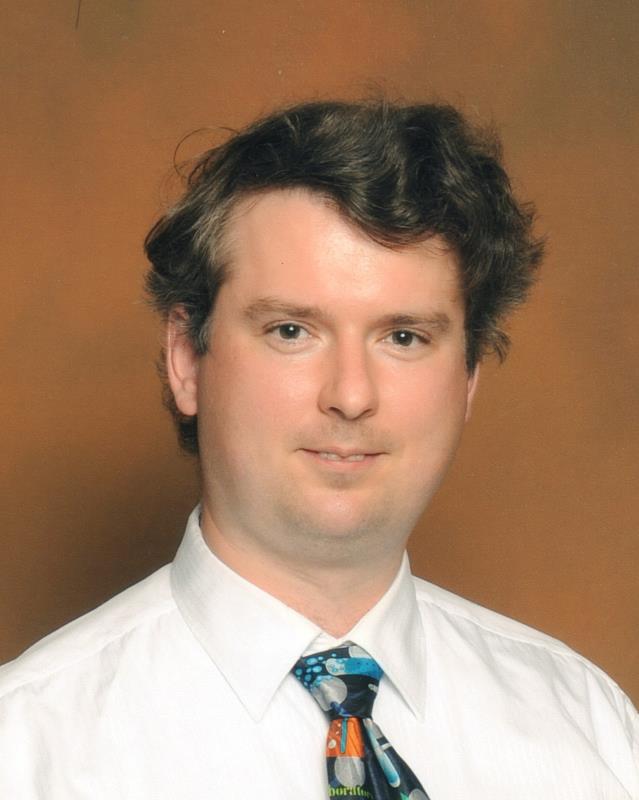
|
|
Yaroslav Filinchuk |
|
Professor of structural chemistry |
|
Molecules, Solids and Reactivity (MOST)
|
| Institute of Condensed Matter and Nanosciences (IMCN) |
| Université Catholique de Louvain (UCL) |
|
Belgium |
|
Personal homepage |
|
|
|
Title: Gas adsorption in a small pore hydride: microscopic and macroscopic characterization by in situ diffraction |
|
Abstract: We investigated an interaction of porous γ-Mg(BH4)2 [1] with small gas molecules, using neutron powder diffraction to accurately localize the guests at low temperatures and synchrotron X-ray powder diffraction to collect data along the adsorption isobars. The latter allows to study structural changes with pressure and temperature variation, giving insight into guest-host and guest-guest interactions, as well as to extract relevant thermodynamic parameters.
I will discuss the guest-host and guest-guest interactions, size effects, the role of hydridic hydrogen in physisorption, reactivity between the guest and the host. The effect of the probe size on the capacity and location of the guest molecules is remarkable in this small pore system. While typically each pore can be occupied by one of two guests, the amount of hydrogen that can be loaded reaches up to 5 molecules per pore (one pore in two, given the geometrical proximity), yielding the total capacity of 2.33 H2 molecules per Mg atom.
We also report on sub-second diffraction experiments on gas absorption by γ-Mg(BH4)2. We resolve the contributions of two kinetic barriers: most likely, the first is via Kr diffusion along the pore 1-D channels of the crystal structure and the second mechanism is through the interchannel aperture window.
|
|
| |
|

|
|
Peer Fischer |
|
Professor |
|
Max Planck Research Group Leader |
| Max Planck Institute for Intelligent Systems |
| University of Stuttgart |
|
Germany |
|
Personal homepage |
|
|
|
Title: From multifunctional nanostructures to nanorobotic systems |
|
Abstract: Manipulation and measurements at the nanoscale in fluids call for multifunctional nanostructures. I describe how one can see specially designed nanoparticles in strongly absorbing whole blood, manipulate them to understand nanorheological fluid properties, and spectroscopically measure their orientation in real time. I describe a general fabrication scheme that can be used to rapidly grow these functional nanostructures, which can be plasmonic, magnetic, and show strong optical activities. Our fabrication technique can be used to tailor the nanostructures’ dielectric functions such that record local plasmon resonance (LSPR) sensitivities can be achieved. I will also demonstrate how these chiral nanoantennas can be used as propellers to penetrate real tissues and organs. The nanopropellers are small enough to slip through the macromolecular network of real tissues and are therefore a promising system for targeted delivery. |
|
|
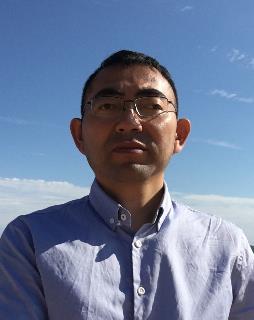
|
|
Qiang He |
|
Professor |
|
Micro/Nanotechnology Research Center |
| Harbin Institute of Technology |
| China |
|
|
|
Personal homepage |
|
|
|
Title: Self-propelled swimming nanomachines for biomedical applications |
|
Abstract: Current drug nanocarriers have potential to perform targeted drug delivery since they can achieve longer systemic circulation so that more drugs can be deposited at the tumor site through the enhanced permeability and retention (EPR) effect. Although various nanocarriers have been successfully used to deliver drugs, the targeting ratios are still very low since they cannot actively seek the tumor site and also lack a propelling force to penetrate the tumor beyond their normal diffusion limit. Inspired by natural swimmers (e.g. bateria), our group focuses on the design of synthetic swimming nanomachines which have ability of converting chemical energy or various physical stimuli into autonomous motion in fluids. These as-assembled nanomachines are able to be served as both autonomous motor and smart cargo, performing drug loading, targeted transportation and remote controlled release in the vicinity of cells and tissues in an organism. Such swimming nanomachines may provide a new trend in the design of next-generation drug delivery for actively seeking sites of diseases and targeted drug transport.
|
|
|
|

|
|
Alexander M. Leshansky |
|
Associate Professor |
|
Department of Chemical Engineering |
| Technion |
| Israel Institute of Technology |
|
Israel |
|
Personal homepage |
|
|
|
Title: Planar magnetic nanomachines: role of symmetry and controlled propulsion |
|
Abstract: Steering of nano-/microhelices by a rotating magnetic field is considered a promising technique for controlled navigation of tiny objects through viscous fluidic environments. It was recently demonstrated that simple geometrically achiral planar structures can also be steered quite efficiently [1]. Such planar propellers are interesting for practical reasons, as they can be mass-fabricated using standard photolithography techniques.
Following the earlier development of a theory of driven rotation and propulsion of magnetized object of an arbitrary shape in an in-plane rotating magnetic field [2], we propose general symmetry arguments (involving parity and charge conjugation) establishing correspondence between propulsive solutions of simple planar V-shaped structures on orientation of the dipolar magnetic moment [3]. In particular, it can be shown that in-plane magnetization results in propulsion due to a spontaneous symmetry breaking, whereas the rotating motors swim either parallel or anti-parallel to the field rotation axis depending on their initial orientation. Particular off-plane magnetization yields unidirectional propulsion typically associated with chiral structures, such as helices.
Since planar micro/nano-structures are prone to in-plane magnetization and their uniform off-plane magnetization is not an easy task, the interesting question is whether they can be steered in a controllable fashion? Here we demonstrate that actuation by a conically rotating magnetic field (i.e., superposition of an in-plane rotating field and constant field orthogonal to it) can yield efficient unidirectional propulsion of planar and in-plane magnetized structures [4]. In particular, we found that the symmetrical V-shape magnetized along its symmetry axis which exhibits no net propulsion in in-plane rotating field, shows unidirectional in-sync propulsion with a constant (frequency-independent) velocity when actuated by the conical field. When the constant field is imposed in plane of the rotating field, it results in the net propulsion accompanied by the drift orthogonal to the axis of the field rotation. Such setup can potentially be used to achieve spatial control over motion of multiple propellers.
|
|
|
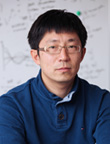
|
|
Cong Liu |
|
Professor |
|
Interdisciplinary Research Center on Biology and Chemistry |
| Shanghai Institute of Organic Chemistry |
| Chinese Academy of Sciences |
|
China |
|
Personal homepage |
|
|
|
Title: Structural investigation of amyloid proteins and its application in developing nanomaterials |
|
Abstract: |
|
| | |
|
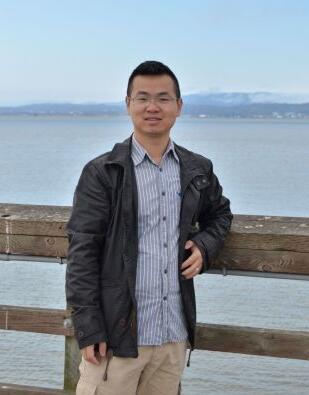
|
|
Zheng Liu |
|
Associate Professor |
|
Centre for Micro-/Nano-electronics (NOVITAS) |
| School of Electrical and Electronic Engineering |
| Nanyang Technological University |
|
Singapore |
|
Personal homepage |
|
|
|
Title: Landscape of TMDs: from synthesis to electrochemical electronics |
|
Abstract: Two-dimension (2D) transition-metal dichalcogenides (TMDs) have recently provided a rich source of research opportunity, revealing interesting physical phenomena including quantum-spin Hall effect (QSH), valley polarization, 2D superconductivity, and potential applications for functional devices. Here, we demonstrate that molten salt-assisted chemical vapor deposition can be broadly applied for the synthesis of a wide variety of 2D TMDs [1]. We demonstrate the synthesis of 47 compounds, including 32 binary (Ti-, Zr-, Hf-, V-, Nb-, Ta-, Mo-, W-, Re-, Pt-, Pd- and Fe-based), 13 alloys (including 11 ternary, 1 quaternary and 1 quinary), and 2 heterostructured compounds. We elaborate the general growing mechanism of this method, demonstrating that the salt decreases the melting point of reactants and facilitates the formation of intermediate products.
Based on the 2D materials, we have recnelty revisited the semiconductor-electrolyte interface and unraveled a universal self-gating phenomenon through micro-cell based in-situ electronic/electrochemical measurements [2]. We unveiled a surface conductance mechanism under self-gating that dominates the charge transport in semiconductor electrocatalysts, and demonstrate the strong correlation between them. Then we demonstrate that the type of semiconductor catalysts strongly correlates and their electrocatalysis, i.e., n-type semiconductor catalysts favor cathodic reactions such as hydrogen evolution reaction (HER), p-type ones prefer anodic reactions such as oxygen evolution reaction (OER), and bipolar ones tend to perform both anodic and cathodic reactions. Our study provides a new insight into the electronic origin of semiconductor-electrolyte interface during electrocatalysis, paving the way for designing high-performance semiconductor catalysts.
|
|
|
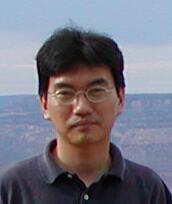
|
|
Kenji Matsuda |
|
Professor |
|
Department of Synthetic Chemistry and Biological Chemistry |
| Graduate School of Engineering |
| Kyoto University |
|
Japan |
|
Personal homepage |
|
|
|
Title: Photochromic Molecules for Photoswitching Units in Molecular
Optoelectronics |
|
Abstract: In molecular electronics, photochromic compounds are considered to be promising candidates for photoswitching units. In diarylethenes (DAEs) the connectivity of -system changes significantly by irradiation of light. Based on this idea, the photoswitching of exchange interaction and molecular conductance through DAE molecule has been achieved by our group. Drain-current switching of DAE-channel organic field-effect transistors with light- and electric-field effects will also be presented. With respect to the arrangement of DAE molecules, high sensitive photochemical control of the assembly using high cooperative system at two-dimensional solid/liquid interface will be presented.
|
|
|
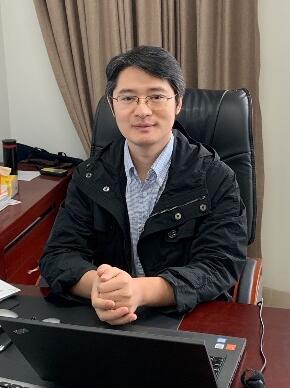
|
|
Zhihong Nie
|
|
Professor |
|
State Key Laboratory of Molecular Engineering of Polymers |
| Department of Macromolecular Science |
| Fudan University |
|
China |
|
Personal homepage |
|
|
|
Title: Nano-molecules: New Building Blocks for Materials Discovery |
|
Abstract: The past decades have witnessed remarkable success in the synthesis of inorganic nanoparticles with interesting optical, electronic, or magnetic properties. Realizing the enormous potential of nanoparticles in such as energy, biomedical, and optoelectronic fields requires the organization of these particles into larger or hierarchically ordered structures with defined macroscopic properties. Molecules are the most important building blocks of matter. They exhibit astonishing precision in the arrangement of atoms and are capable of assembling into functional structures with high complexity and diverse functions. The ability to organize nanoparticles into molecule equivalents holds great promises to manipulate matter at nanoscale scale and to exploit the emergent properties of nanoparticle ensembles. In this talk, I will present our efforts to the design of “nanoscale molecules” (nano-molecules) via self-assembly and the discovery of new materials from nano-molecules.
|
|
| |
|
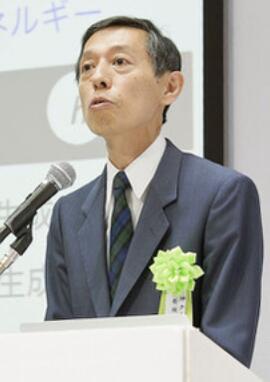
|
|
Hiroshi Onishi |
|
Professor |
|
Chemistry Department
Kobe University |
| Program Officer |
Japan Society for the Promotion of Science |
|
Japan
|
|
Personal homepage |
|
|
|
Title: Pico-Newton Force Sensing at Liquid-Solid Interfaces: Application to Lubricants |
|
Abstract: Frequency-modulation atomic force microscopy (FM-AFM) is a promising tool to observe solid topography and also liquid structure at liquid-solid interfaces. The cantilever with a tip is mechanically oscillated. The shift of the resonance frequency, delta f, represents the force pushing or pulling the tip. Microscopes with a force sensitivity of 10 pN or better in water and organic solvents have been developed and commercialized to date. Using the advanced microscopes, we have examined structured liquids at a number of interfaces including water-CaCO3, SrTiO3, organic monolayers, etc. The observed delta-f distributions are interpreted with water density distribution through Gibbs free energy perturbed by the solid surface. The force sensitivity of 10 pN is the key for probing force on single liquid molecules.
Possible application of delta-f mapping to tribology research will also be mentioned. Most liquid lubricants used in mechanical applications are low-vapor-pressure hydrocarbons modified with a small quantity of polar compounds. The polar modifiers are deposited on the surface of sliding solids, typically steel objects. The deposited layer reduces friction and wear by preventing direct contacts of solids. Controlling the adsorbed layer is the key to improve lubrication at liquid-solid interfaces. The lateral and vertical distribution of the adsorbed layers should be characterized in lubricants. This is not an easy task. FM-AFM provides the local density distribution of lubricants in a spatial resolution of 0.1 nm or better. |
|
|
|

|
|
Gajendra S Shekhawat |
|
Research Professor |
|
Department of Material Science and Engineering |
| Director, Scanned Probe Imaging and Development Center |
| Northwestern University |
|
USA |
|
Personal homepage |
|
|
|
Title: Micromachined based Chip Scale Thermal Sensor for Hot Spot Mapping in Transition Metal Dichalcogenides |
|
Abstract: The lateral resolution of scanning thermal microscopy (SThM) has hitherto never approached that of mainstream atomic force microscopy, mainly due to poor performance of the thermal sensor. Herein, we will present a nanomechanical system based thermal sensor (thermocouple) that enables high lateral spatial resolution that is often required in nanoscale thermal characterization in wide range of applications. This thermocouple-based probe technology delivers excellent lateral resolution (~ 20 nm), extended high temperature measurements greater than 700°C without cantilever bending, and a very high thermal sensitivity (̃~0.04 °C). The origin of significantly improved figures-of-merit lies in the probe design that consists of a hollow silicon tip integrated with a vertically oriented thermocouple sensor at the apex (low thermal mass) which interacts with the sample through a metallic nanowire (50 nm diameter), thereby achieve high lateral resolution. The efficacy of this approach to SThM is demonstrated by imaging embedded metallic nanostructures in silica core shell, spatially map the temperature rise across various defects and heterogeneities of titanium carbide (Ti3C2Tx - T stands for surface terminations) MXene nanostructures under high electrical bias with sub-50-mK temperature resolution, and to map the spatial distribution of the temperature rise within monolayer transition metal dichalcogenide (TMD) devices upon dissipating a high electrical power through a lateral interface. The results directly demonstrate that lateral heterojunctions between MoS2 sub-50-nm spatial resolutions. The nanoscale pitch and extremely small thermal mass of the probe promise significant improvements over existing methods and wide range of applications including in semiconductor devices, biomedical imaging, and data storage. |
|
|
|

|
|
Weihong Tan |
|
Distinguished Professor, V. T. and Louise Jackson Professor of Chemistry |
|
University of Florida
USA |
| Vice President and Director |
| State Key Laboratory of Chemo/Biosensing and Chemometrics |
|
Hunan University, China
Academician, Chinese Academy of Sciences |
|
Personal homepage |
|
|
|
Title: DNA-Based Biomaterials and Functional Molecular Networks |
|
Abstract: Functional materials are essential for economic growth and human health, and also critical for the continuous innovation in science. Precise synthesis of materials can significantly enrich and/or improve their features, providing a solid scientific foundation and technical support for the development of innovative materials with high-end performance. Because of their distinct properties of programmable design and specific molecular recognition, DNA molecules can serve as one of the ideal building blocks to achieve precise control over materials’ structure and function at the molecular level, thus providing infinite possibilities for constructing various functional materials, including biological and clinically useful materials. Meanwhile, multifunctional molecular networks based on DNA can be constructed through the precise synthesis of DNA and the intelligent design of DNA logic circuit. These molecular networks can be potentially used to mimic some basic biological functions. This report will show some examples about using DNA as the best building block for precise fabrication of advanced materials, and our latest research progress in the construction of DNA-based biomaterials and functional molecular networks.
|
|
| |
|
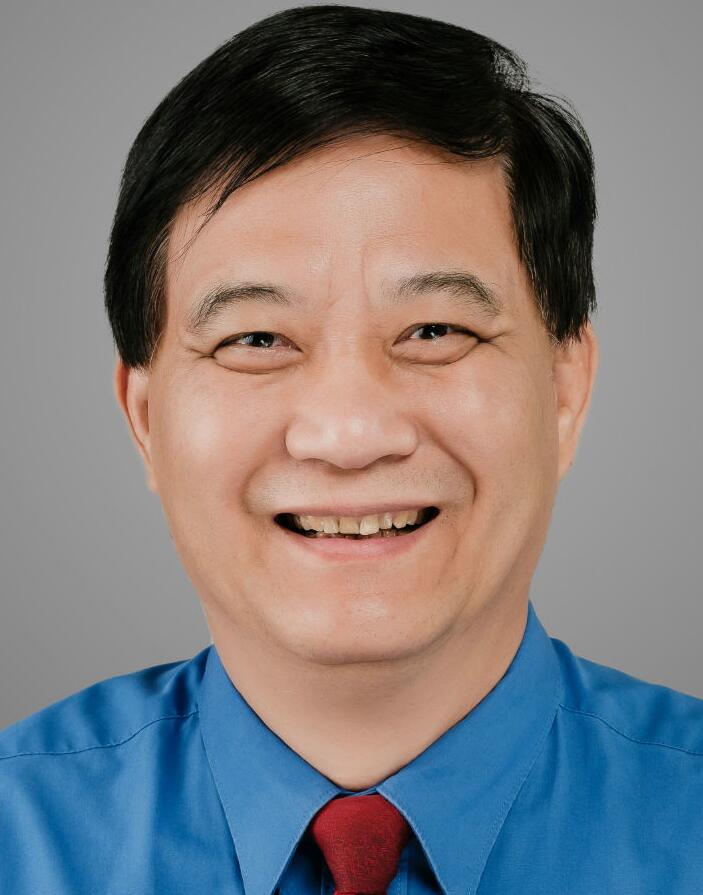 |
|
Ben Zhong Tang |
|
Stephen K. C. Cheong Professor of Science |
|
Chair Professor of Chemistry
Chair Professor of Chemical and Biological Engineering |
| Academician, Chinese Academy of Sciences |
Fellow, Royal Society of Chemistry |
|
The Hong Kong University of Science and Technology
|
|
Personal homepage |
|
|
|
Title: Advanced Functional AIE Dots |
|
Abstract: Long-term non-invasive cell tracing by fluorescent probes is of great importance to understand genesis, development, invasion and metastasis of cancerous cells. To efficiently trace living cells through a noninvasive and real-time manner, researchers have devoted much effort to develop new fluorescent probes. Traditional π-conjugated fluorophors are prone to aggregate, which often quenches their light emissions and is a common photophysical phenomenon known as aggregation-caused quenching (ACQ). We succeeded in developing a series of efficient organic emitters with aggregation-induced emission (AIE) characteristics by linking propeller-like tetraphenylethene (TPE) unit to traditional dyes through covalent bond. Encapsulation of the AIE luminogens in biocompatible polymer matrix yields optically stable nanodots with uniform size, high brightness and low cytotoxicity. The AIE nanodots carrying specific surface functional groups show high emission efficiency, large absorptivity, excellent biocompatibility and strong photo-bleaching resistance, making them ideal for targeting specific cells and/or tissues, and long-term non-invasive in vitro and in vivo cell tracing. Moreover, different from quantum dot (QD)-based probes, the organic fluorescent nanodots show no blink state and do not contain heavy metal ions that are potentially toxic when used in biological systems. The organic AIE dots outperform their counterparts of commercial inorganic QDs-based cell tracing probes, opening a new avenue in the development of applications, such as organic fluorescent probes for monitoring biological processes. |
|
|
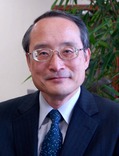
|
|
Yoshito Tobe |
|
Professor Emeritus and Guest Professor |
|
The Institute of Scientific and Industrial Research |
|
Osaka University, Japan |
| Chair Professor |
|
National Chiao Tung University, China |
|
Personal homepage |
|
|
|
Title: Nanopatterning by Covalent Grafting of Graphite using Self-Assembled Molecular Networks as Templates |
|
Abstract: Since periodically controlled chemical functionalization of carbon materials broadens application potential and supports processing and development, methods that yield nanopatterned functionalization on flat carbon surfaces are critical for modulation of the intrinsic electronic and physical properties of these materials. We reported a new molecular scale lithographic approach which employs lamellar type self-assembled molecular monolayers of n-alkanes as templating masks during electrochemical covalent functionalization of graphite and graphene surfaces. One-dimensional control with a lateral periodicity between 4 and 7 nm was demonstrated utilizing molecular templates of different alkane lengths. The key to the success for this method is a phase separated solution double layer consisting of the masking organic layer underneath an aqueous layer containing electrochemically active diazonium molecules which upon electrochemical reduction generate aryl radicals capable of surface grafting. This protocol was applied to two-dimensional control of grafting by using porous self-assembled molecular networks formed by hexaalkoxy-substituted triangle building blocks as templating masks.
|
|
|
|

|
|
Jussi Toppari
|
|
Professor |
|
Department of Physics |
| Nanoscience Center |
| University of Jyväskylä |
|
Finland |
|
Personal homepage |
|
|
|
Title: Plasmonic Nanostructures and Single Electron Devices Based on DNA Constructions |
|
Abstract: The molecular electronics as well as molecular scale optics (via plasmonics), have long been visualized to pose the next huge leap in technology development. Even not fully realized yet, the promises of these nanotechnologies are certainly getting closer to be fulfilled. The most crucial issues in realization of functional molecular scale electrical devices is to find both molecular conductors as well as suitable building blocks and scaffolds, for nanoscale assembly. For nano-optics the plasmonic nanostructures have shown high potent due to their unique optical properties such as field enhancement and possibilities for subwavelength optics. However, due to limitations of the conventional nanofabrication methods, nanostructures with tunable plasmonic/optical activity in visible range are hard to realize, especially in large amounts. At the moment, DNA has proven to be a very versatile and promising molecule for nanoscale patterning. Quickly developing techniques based on DNA self-assembly provide precise and programmable ways to form electrical molecule scale devices as well as plasmonic nanoscale structures, even in large quantities. Yet, in the respect of the long history and debate on the possibly conductivity of DNA itself, the electrical properties of DNA-based structures are also of a great interest.
We have studied the conductance of several types of individual DNA nanostructures and found that even the electrical conductivity of DNA-helix as such, seems to be too fragile to be directly utilized, the multilayered 3D DNA origami structures may have improved properties. However, more robust realization of DNA-based electrical devices, relies on other components and uses DNA as only a scaffold. Hence, we have utilized DNA nanostructures to assemble a row of gold nanoparticles (AuNP). The whole entity is further trapped between metallic electrodes where AuNPs act as metallic islands to form a single electron transistor (SET). Due to small size of the islands, this SET could work even at room temperature in contrast to the usually needed kryogenic temperatures. For nanoscale optics, we have developed a novel method, which takes advantage of the DNA origami constructions and together with conventional nanofabrication processes enabling fabrication of high quality sub-100-nanometer plasmonic nanostructures with desired shapes. As a demonstration, we have fabricated optical bowtie antennas with a tunable plasmonic resonance in visible range. The method is highly parallel, which enabled us to fabricate also optically chiral surface with high coverage. This ability to fabricate metallic nanoparticles with designed shape in high quantities provides great potential in various applications, especially sensing and metamaterial fabrication.
|
|
| |
|

|
|
Takayuki Uchihashi |
|
Professor |
|
Laboratoy of Biomolecular Dynamics and Function |
|
Department of Physics |
|
Nagoya Unversity |
|
Japan |
|
Personal homepage |
|
|
|
Title: Real-time nanoscale visualization of biological molecules at work with high-speed atomic force microscopy |
|
Abstract: Biological molecules fulfil a wide variety of unique functions. Their functions are essentially elicited from conformational change and/or interactions with other molecules which are often triggered by binding of ligand/substrate and changes in the external environment. Therefore, studying dynamic processes on individual molecules is indispensable to gain mechanistic insight into biological molecules. Nevertheless, a tool with an ability to directly record both conformational changes and dynamic molecular interactions in real time at single-molecule resolution has not been available. Atomic force microscopy (AFM) is a versatile technique to study nanoscale structures of materials under various environments. One of the most coveted new functions of AFM is “fast recording” because it allows the observation of dynamic processes occurring at the nanoscale. The visualization of dynamic processes provides direct and deep insights into the target objects and phenomena under the microscope. This new capability of observation should open a new opportunity to reveal essential mechanisms of working proteins. In this talk, we demonstrate some applications of high-speed AFM to imaging of dynamics of single molecules, living cells and dynamic process at solid/liquid interface. |
|
|
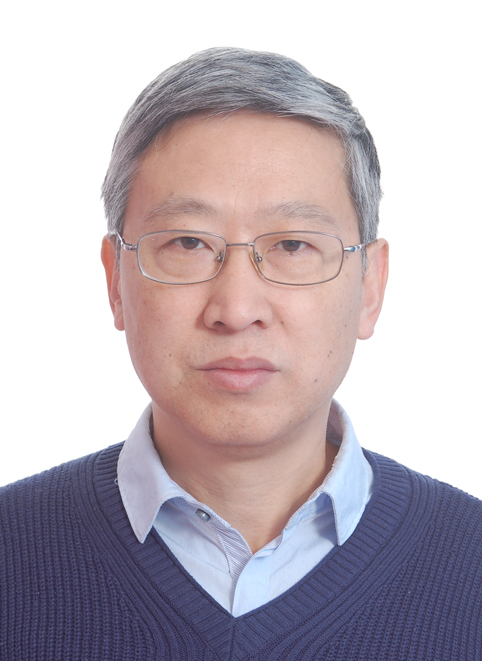
|
|
Chen Wang
|
|
Professor |
|
|
|
National Center for Nanoscience and Technology |
|
|
|
China |
|
Personal homepage |
|
|
|
Title: Surface-mediated Peptide Assembly Structures Studied with STM |
|
Abstract: Peptides and proteins are known to form a variety of ordered structures via assembling processes. The molecular insights of the assembly propensities of various peptide-based nanostructures are keen to the pharmaceutical studies and pathological analysis for neurodegenerative disorder processes such as Alzheimer’s disease (AD). Documented experimental results have revealed that the capability of peptides to form ordered structures has significant dependence on the sequence and composition of amino acids. An important subject under study is the formation mechanisms of peptide assemblies at the level of individual amino acids. We have endeavored to investigate the assembly propensity of peptides based on the high resolution structural analysis of surface-bound peptide assemblies by using scanning tunneling microscopy (STM). Specifically, the dependence of the peptide assembly structures on sequences will be pursued, including the impact of amino acids on the adsorption stability and assembly propensity. It may be anticipated that these efforts could advance the fundamental mechanism underlying the peptide assembly propensity, as well as provide the potential venues for developing novel diagnosis and therapeutic approaches towards relevant diseases.
|
|
|
|
|
|
|

